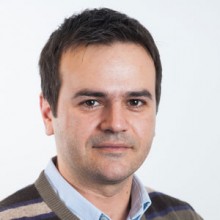
Special Issue Editor
Dr. Paraskevas Tzallas1,2
Guest Editor
1Research Director at the Foundation for Research and Technology – Hellas, Institute of Electronic Structure and Laser (FORTH-IESL), Heraklion (Crete), Greece
2Scientific Advisor, Secondary Sources Division, ELI-ALPS, Szeged, Hungary
Special Issue Information
Dear Colleagues,
Quantum optics and strong laser-field physics are two distinct major research domains founded on the quantum and classical description of the electromagnetic radiation, respectively. In quantum optics, the majority of the studies are performed using weak electromagnetic fields where the interaction is described by fully quantized theories. This research domain has led to fascinating achievements in the field of quantum technology, advancing studies ranging from quantum communication/information/computation, atomic physics, visual science to high-precision interferometry applied for the detection of gravitational waves, with non-classical light sources playing a vital role in these advancements. Strong laser-field physics studies, on the other hand, are nominally performed using intense laser fields where the interaction is described by semi-classical approaches. This research domain has paved the way for extensive and pioneering investigations ranging from ultra-relativistic optics and particle acceleration to extreme ultraviolet/x-ray generation and attosecond science. Recent accomplishments in the quantum optical description of strong laser-field–matter interactions and the generation of novel non-classical light sources have demonstrated that these seemingly disjointed research domains can be synthesized, depicting the potential for exciting new research in strong-field physics and quantum technology.
In this context, this Special Issue welcomes articles addressing, among others, the following main topics: I) fully quantized descriptions of interactions in the strong-field region (relativistic optics, laser-particle acceleration, laser–plasma, interactions, laser–atom interactions, high harmonic generation, etc.) and II) the use of high photon flux non-classical light sources for investigations in non-linear optics (multiphoton processes, harmonic generation, spectroscopy, visual science, etc.).
Dr. Paraskevas Tzallas
Guest Editor



